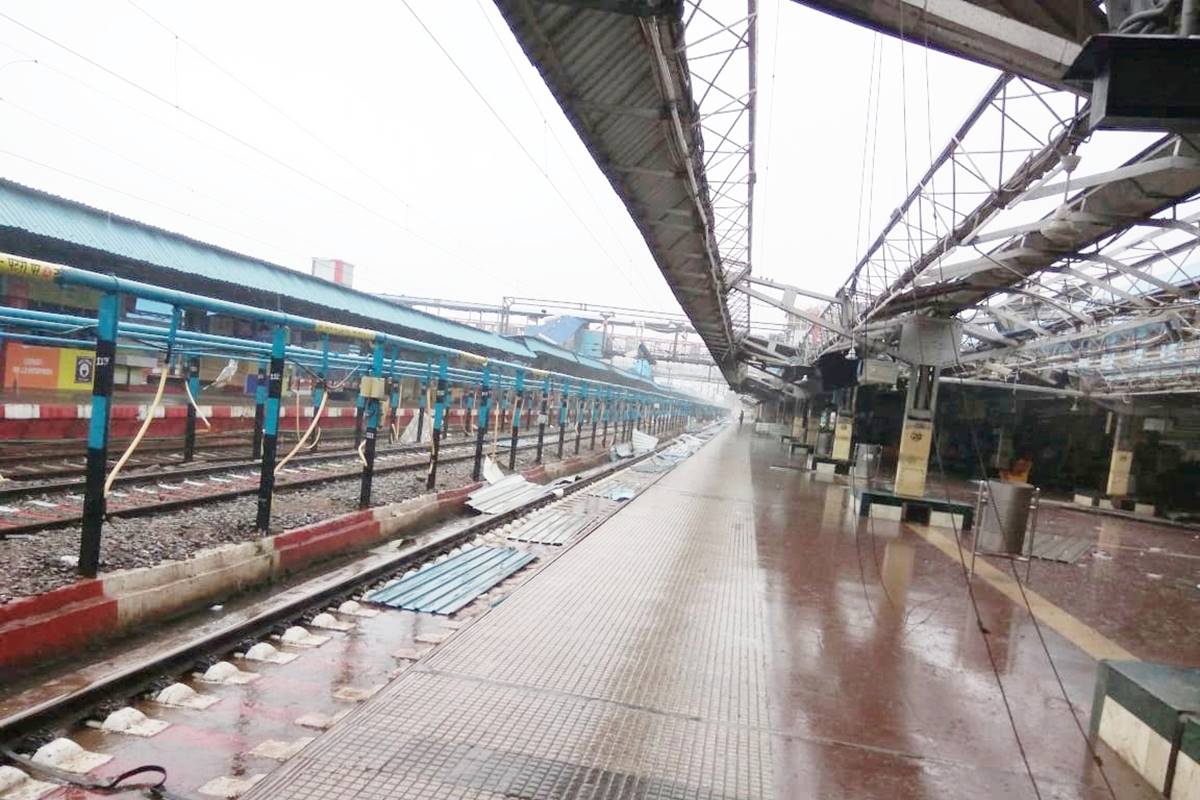People of the state capital Bhubaneswar as well as the coastal villages of Puri, Jagatsinghpur, Cuttack and Kendrapara districts who faced the wrath of the extremely severe Cyclone Fani on Friday were drawing comparisons with the devastation caused by the 1999 Odisha Super Cyclone.
The velocity of the wind was less than the super cyclone, but the destruction in terms of tree cover, electricity poles and lines, telephone towers and houses matched.
Advertisement
The entire coastal belt plunged into darkness, road communication cut off and just like in 1999, flow of information related to the cyclone stopped despite all technological advancement and internet penetration.
Human casualty was however minimal, as has been the case in all cyclones in Odisha post 1999 because of the elaborate disaster mitigation drills and focus on evacuation. The awareness level of people has also increased.
At least 12 lakh people were evacuated in the wake of Cyclone Fani, which claimed eight lives on Friday.
For the residents of Bhubaneswar, Fani was similar to the super cyclone in many ways as it caused havoc for almost three hours. It hit Bhubaneswar twice between 10 am to 12 noon and for a second time after a 30-minute gap.
The super cyclone had also moved around the city like a whirlwind, devastating the tree cover, power infrastructure and houses, recalled residents while pointing out at the gusty wind , hissing sound that was frightening.
The cyclone storm Phailin of 2013, which had also affected the city, was of much less devastating than Fani, they said.
Nobody in the city was willing to believe the official version that the wind speed at Bhubaneswar was 135 kmph. It cannot be less than 160 kmph , they insisted.
Puri was cut off from the rest of the world.
Precaution has become the prime concern for people as cyclone wrought devastation scripted in theses villages two decades ago trail back to worry them.
Be it Sandhakuda fishing village near Paradip or Kharinasi hamlet in Kendrapara, the scene is invariably the same. Locals for whom formation of low pressure, depression weather and storm has become a periodic feature are on the alert to face exigencies of the situation.
“On October 29-30, 1999, super cyclone literally had wiped out our village. Over 900 people had perished then. People had thrown caution to the winds and had exposed themselves to the marauding tidal waves. They paid a heavy price. Now things are different. We faced Phailin, Hudhud, Titli cyclones stubbornly in the recent years and have encountered cyclonic situation over a dozen of times in the past six to seven years,” recounted S. Ramamurthy, a fisherman in Sandhakuda.
“There has been no power supply in our village since noon. We are tuned to hourly radio updates of AIR Cuttack. Rains have begun to lash our village. Wind speed is also picking up. Mighty waves are crashing the shorelines. People are steadily shifting to the safety of cyclone shelters”, narrated Bijoy Shukla, an ex-sarpanch of seaside Ramnagar gram panchayat in Kendrapara district, on Friday.
“We are scared of ingress of tidal waves. So it has become a better proposition to move to safer place particularly during night hours” said Chandan Manna of Kansarabadadandua village.
“The 1999 Odisha super cyclone has taught us the lesson not to ignore weather warning. Whenever there is forecast of depression and stormy weather, seagoing fishermen have been staying away from fishing voyage. People here have made it a moot point to relocate to double storey pucca building and shelter houses,” said Haripad Bhuyan, a resident of Ambiki village.











